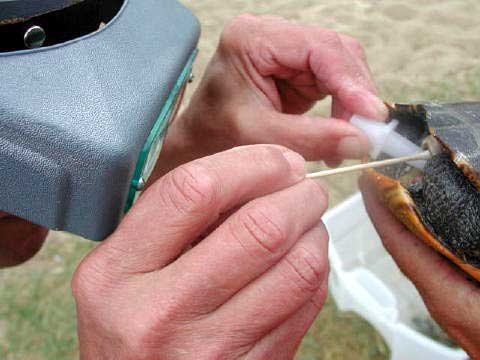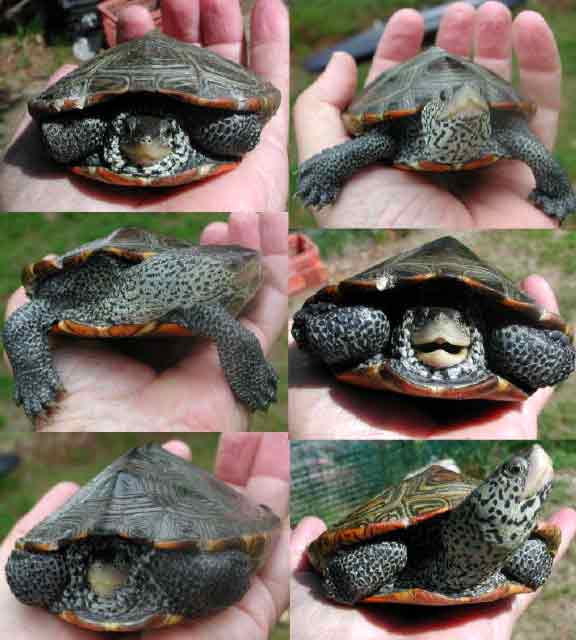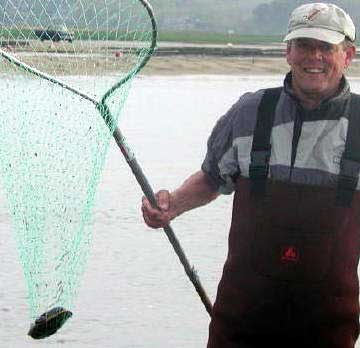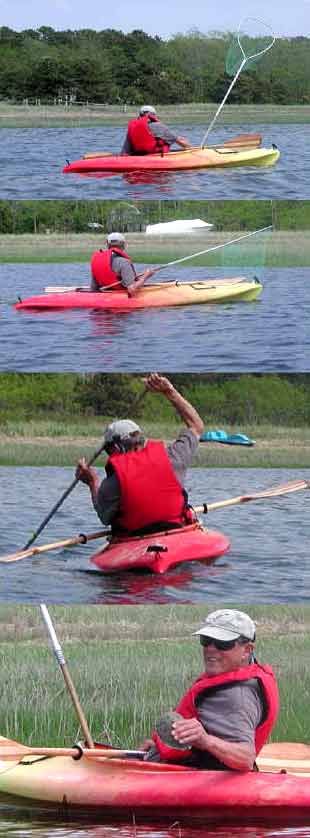The Doctor’s In — 30 May 2002Doctor Ralph Werner from Richard Stockton College of New Jersey is conducting a study of the parasite load on terrapin populations throughout their habitat range. Associated with Roger Wood’s Terrapin Conservation Program at the Wetlands Institute in Stone Harbor, NJ, Ralph decided to begin the 2002 season with a house call on the northernmost diamondback terrapins in the world just as they’re wakening from a long winter’s sleep. | |||||||

![]()
During his three day visit, we captured and examined 68 turtles from two distinct terrapin populations: 62 from Wellfleet on the Cape Cod Bay side and 6 from Pleasant Bay on the Atlantic Ocean shore of Cape Cod. The Wellfleet Bay turtles came from two estuaries: 44 out of Chipman’s Cove in the northeast and 18 from Blackfish Creek in the south. The demographics ranged from 3-year-old juveniles to ancient turtles aged beyond the reckoning of this researcher. In both locations we captured a good number of pre-pubescent terrapins (see photo array below), still easily and definitively “ageable.” In all, a very nicely distributed set of specimens to meet every hope for Ralph’s visit. And to peg the satisfaction meter into the “exceeds expectation” zone, we even managed to provide a striped bass to nail one of his final casts on the last, fog-shrouded morning in Blackfish Creek. |

|
While everyone — even the turtles — seemed to enjoy Ralph’s visit to the Cape, I thought it a bit presumptuous when he instructed the terrapins on a regime of limbering exercises, so that they could nimbly avoid capture in the future. (Photo courtesy of Elizabeth Hogan)
|


